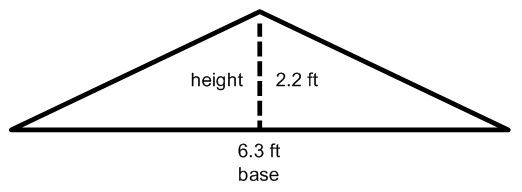Assignment: 03-Area of Triangles and Parallelograms
Practice: 04-Perimeter and Area Practice
I want you to take a look at the rectangle below:
 Using the formula we previously learned in Area of Squares and Rectangles, l x w, we could calculate that the area of this rectangle is 15 in². Now what happens if we draw a diagonal line from one corner to the other and then break it apart. Like so:
Using the formula we previously learned in Area of Squares and Rectangles, l x w, we could calculate that the area of this rectangle is 15 in². Now what happens if we draw a diagonal line from one corner to the other and then break it apart. Like so:
You’ll notice we now have two triangles. This brings us to our formula for finding the area of a triangle. Rather than calling them length and width, we refer to them as the base (b) and the height (h). The formula is (1/2)bh.
Rather than referring to these as length and width, we refer to them as base and height. This comes in handy if the triangles are skewed as below. Notice, the base is still the bottom, but the height comes up the middle of the triangle rather than one of the sides.
![]() Back to the two triangles we split apart:
Back to the two triangles we split apart:

If I move the second triangle so that the flat sides align, I now have a parallelogram:
 Notice that I have not gotten rid of any of the area. It is still the exact same size as the original rectangle, its space is just rearranged. We follow the same formula to find the area except rather than calling them length and width, we call them base and height.
Notice that I have not gotten rid of any of the area. It is still the exact same size as the original rectangle, its space is just rearranged. We follow the same formula to find the area except rather than calling them length and width, we call them base and height.
a = bh
a = 3 x 5 = 15in²

